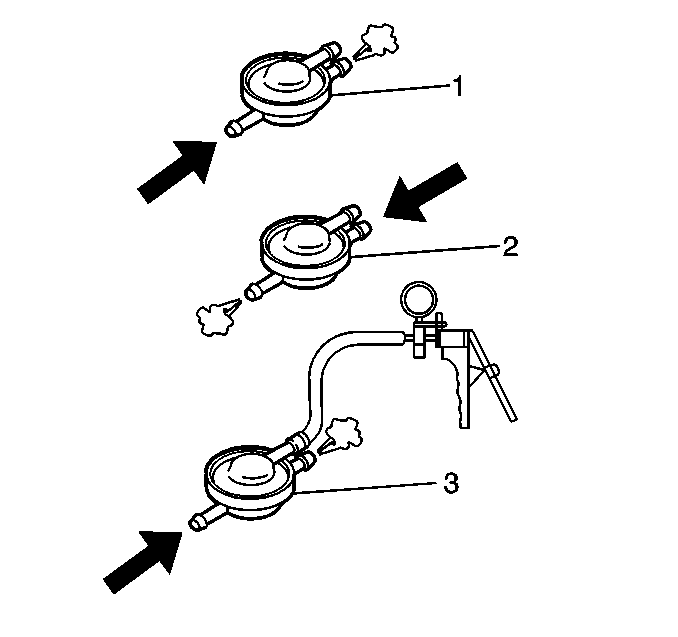For 1990-2009 cars only
Evaporative Emission (EVAP) Canister Purge System Inspection
Caution: Do not breathe the air through the EVAP component tubes or hoses. The fuel vapors inside the EVAP components may cause personal injury.
Important: Perform a careful visual inspection of the evaporative emission (EVAP) control system components and the connecting hoses before diagnosis of an EVAP system malfunction.
Important: The EVAP canister purge system does not perform purging unless the engine is sufficiently warmed up and the heated oxygen sensor (HO2S) is fully activated.
Failure of the EVAP canister purge system to pass any of the above checks indicates a possible malfunction that will require further inspection.- Allow the engine to cool to room temperature.
- Start the engine.
- Disconnect the purge hose from the EVAP canister.
- Place a finger against the end of the disconnected hose and check for vacuum. Vacuum should not be felt when the engine coolant temperature is less than the normal operating temperature.
- Connect the purge hose to the EVAP canister and warm the engine up to a normal operating temperature.
- Disconnect the purge hose from the EVAP canister.
- Place a finger over the disconnected hose and check for vacuum. Vacuum should be felt with the engine running at a normal operating temperature and at 1,500 RPM.
Evaporative Emission (EVAP) Canister Inspection
- Disconnect the vacuum hoses from the EVAP canister.
- Blow air into the tank pipe of the EVAP canister. There should be no restriction of air flow through the purge pipe and the air pipe.
- Replace the EVAP canister if the EVAP canister fails the above check.
- Connect the vacuum hoses to the EVAP canister.
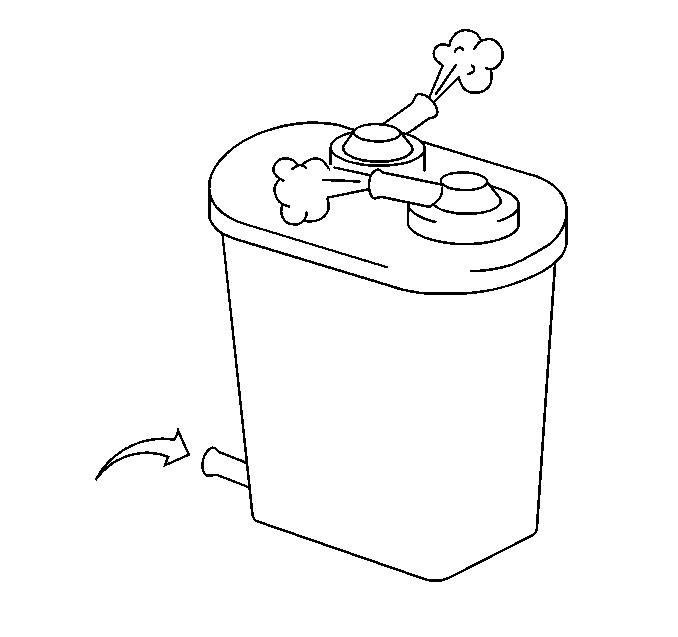
Evaporative Emission (EVAP) Canister Purge Valve Inspection
- Disconnect the electrical connector from the EVAP canister purge valve .
- Using a digital multimeter (DMM) (1), measure the resistance of the EVAP canister purge valve (2) between both terminals. The resistance should be 28 to 36 ohms at 20°C (68°F).
- Replace the EVAP canister purge valve if the resistance is not 28 to 36 ohms at 20°C (68°F). If the resistance is within specification, proceed to Step 4.
- Disconnect the purge valve vacuum hoses from the intake manifold and the vacuum pipe from the EVAP canister.
- Blow air into the purge valve vacuum hose that was disconnected from the vacuum pipe. Air should NOT pass through the EVAP canister purge valve and exit from the intake manifold hose.
- Connect 12 volts DC to the terminals of the EVAP canister purge valve.
- Blow air into the purge valve vacuum hose that was disconnected from the EVAP canister. Air should pass through the EVAP canister purge valve and exit from the intake manifold hose.
- Replace the EVAP canister purge valve if the EVAP canister purge valve failed this inspection.
- Connect the purge valve vacuum hoses and the electrical connector.
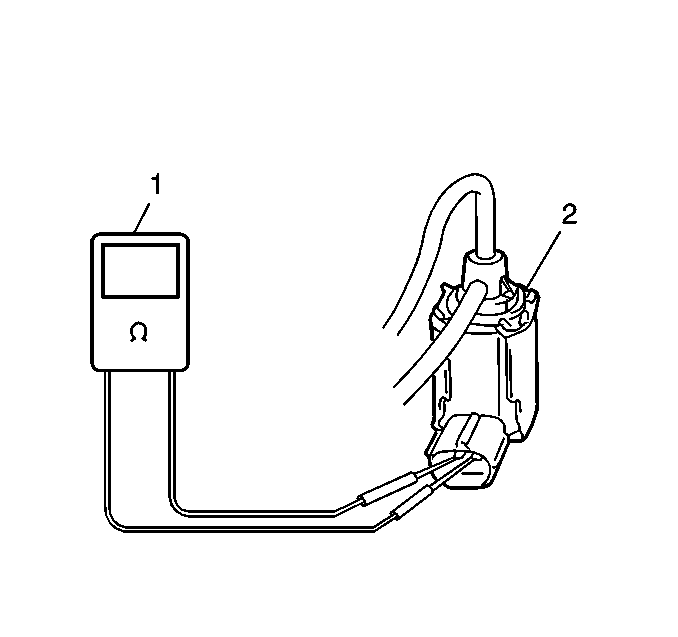
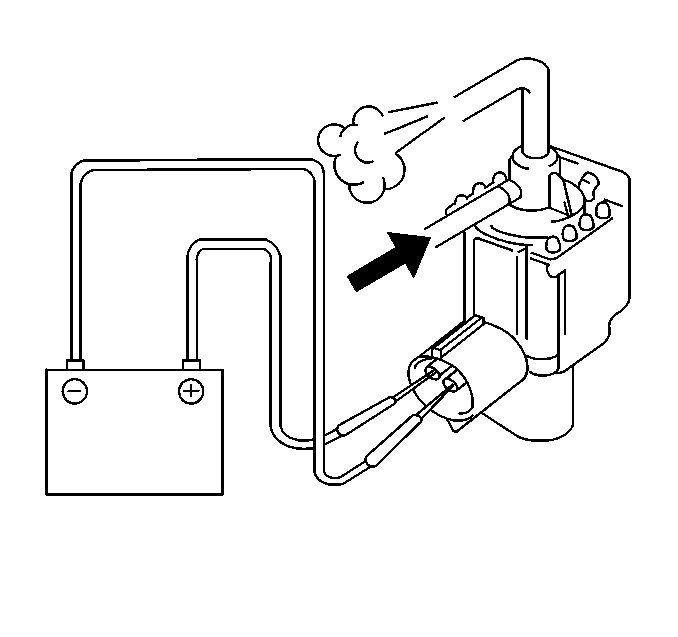
Evaporative Emission (EVAP) Canister Vent Solenoid Inspection
- Disconnect the electrical connector from the EVAP canister vent valve .
- Using a DMM, measure the resistance of the EVAP canister vent valve between both terminals. The resistance should be 25 to 30 ohms at 20°C (68°F).
- Replace the EVAP canister vent valve if the resistance is not 25 to 30 ohms at 20°C (68°F). If the resistance is within specification, proceed to Step 3.
- Disconnect the EVAP canister vent valve hose from the EVAP canister.
- Blow air into the vent valve hose that was disconnected from the EVAP canister. Air should pass through the EVAP canister vent valve.
- Connect 12 volts DC to the terminals of the EVAP canister vent valve .
- Blow air into the vent valve vacuum hose that was disconnected from the EVAP canister. Air should not pass through the vent valve and exit from the other end.
- Replace the EVAP canister vent valve if the vent valve failed this inspection.
- Connect the vent valve vacuum hoses and the electrical connector.
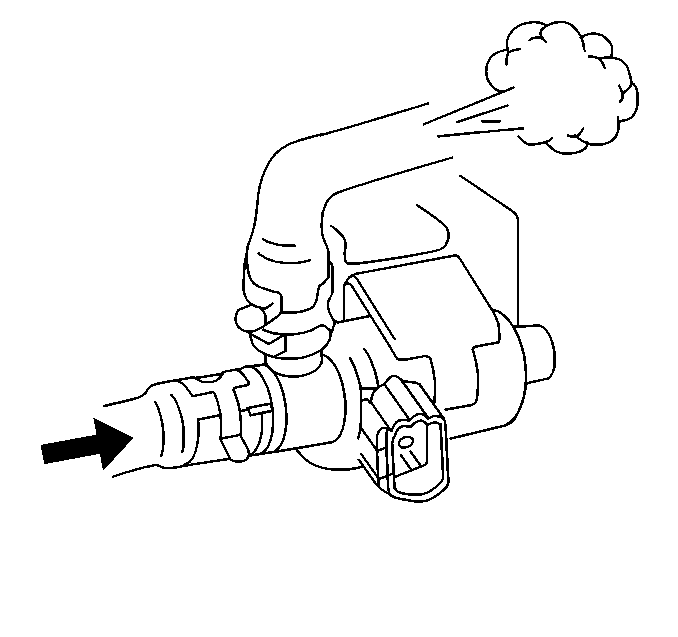
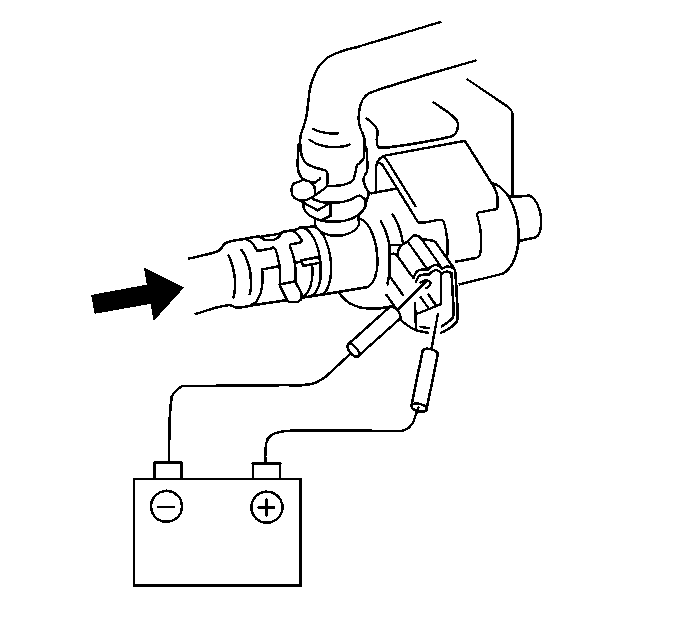
EVAP Tank Pressure Control Solenoid Valve Inspection
- Disconnect the electrical connector from the EVAP tank pressure control valve .
- Using a DMM, measure the resistance of the pressure control valve between both terminals. The resistance should be 28 to 36 ohms at 20°C (68°F).
- Replace the pressure control valve if the resistance is not 28 to 36 ohms at 20°C (68°F). If the resistance is within specification, proceed to Step 4.
- Disconnect the EVAP tank pressure control valve vacuum hoses from the intake manifold and the vacuum pipe from the fuel tank pressure control valve.
- Blow air into the EVAP tank pressure control valve vacuum hose that was disconnected from the vacuum pipe. Air should not pass through the EVAP tank pressure control valve and exit from the intake manifold hose.
- Connect 12 volts DC to the terminals of the EVAP tank pressure control vacuum valve .
- Blow air into the EVAP tank pressure control valve vacuum hose that was disconnected from the vacuum pipe. Air should pass through the EVAP tank pressure control valve and exit from the intake manifold hose.
- Replace the EVAP tank pressure control valve if the EVAP tank pressure control solenoid valve failed this inspection.
- Connect the EVAP tank pressure control valve vacuum hoses and the electrical connector.
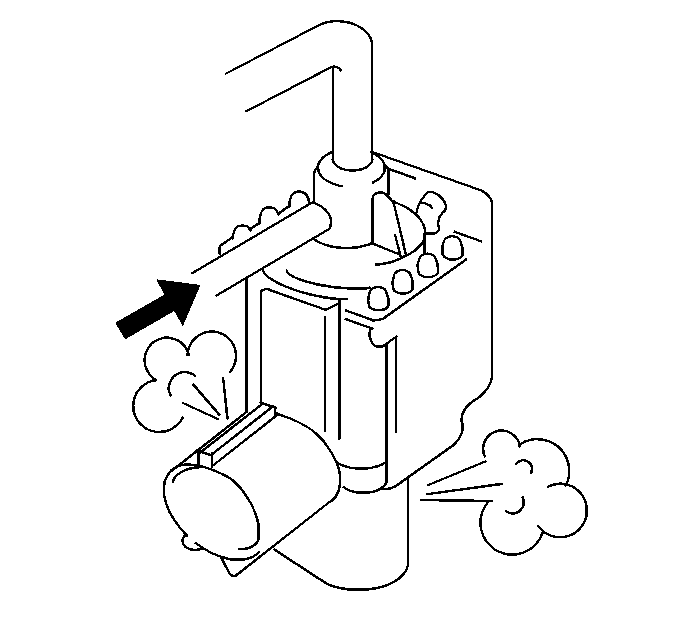

Tank Pressure Control Valve Inspection
- Connect a length of the hose to the fuel tank pressure control valve vacuum port marked TANK.
- Blow hard into the hose. Air should pass slowly through to the side marked CAN of the fuel tank pressure control valve (1).
- Remove the hose from the TANK side and connect it to the CAN side of the fuel tank pressure control valve.
- Blow easily into the hose. Air should pass through to the side marked TANK of the fuel tank pressure control valve (2).
- Use a J 23738-A hand vacuum pump in order to apply the vacuum to the vacuum port.
- With vacuum applied, blow into the hose marked TANK. Air should pass easily through to the side marked CAN of the fuel tank pressure control valve (3).
- If the fuel tank control valve fails any of the above checks, replace the fuel tank pressure control valve.
